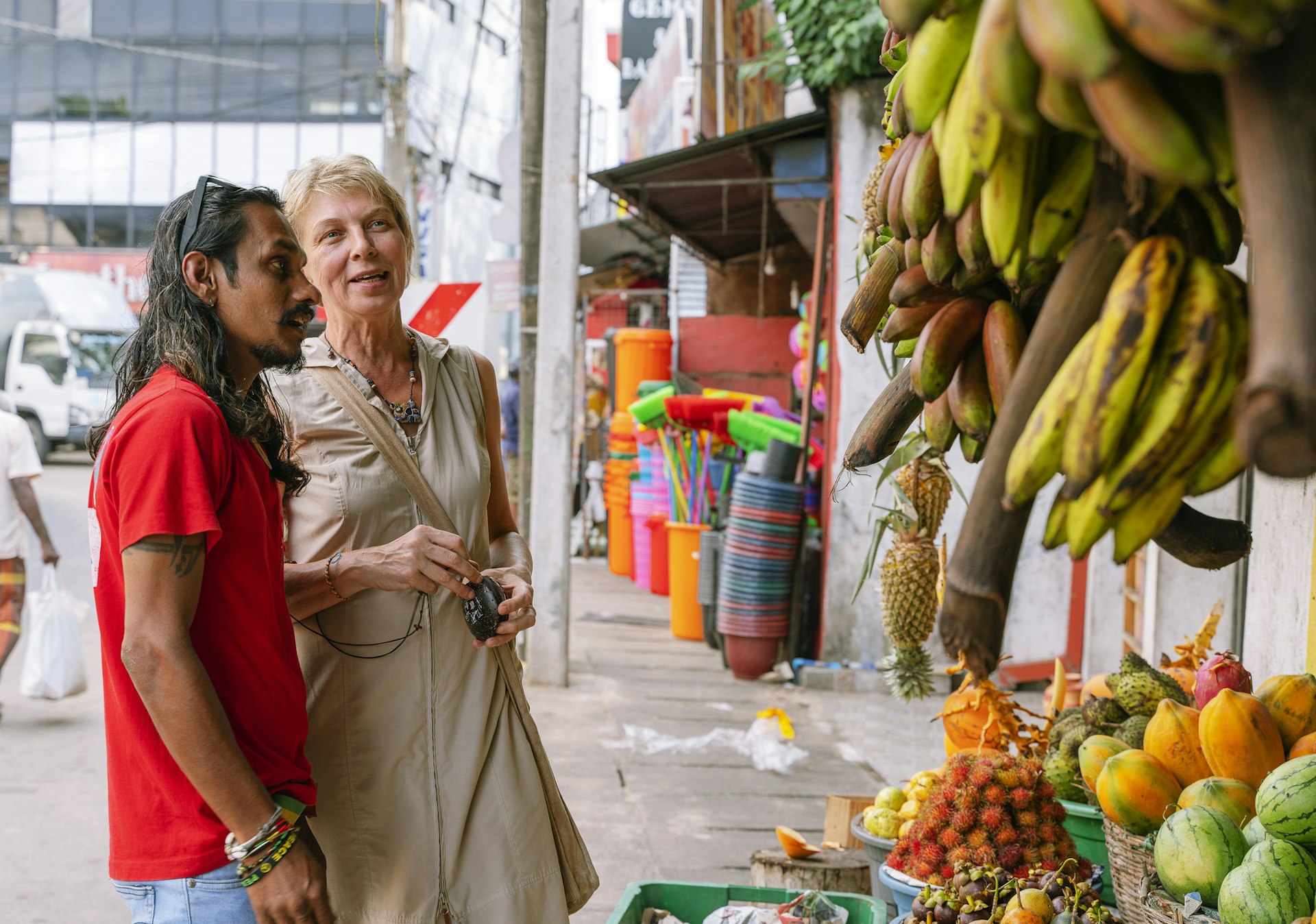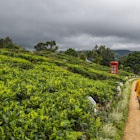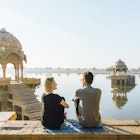Sri Lanka has always been an affordable destination to visit for all kinds of travelers. Even for those with a shoestring budget, the island nation offers travel experiences that don’t break the bank: palm-fringed golden sandy beaches, wildlife adventures, and ancient temples packed with fascinating history. Throw in the island's incredible hospitality, and Sri Lanka is a great place to visit for those on a budget.
With the Sri Lankan tourism industry slowly recovering from the pandemic, there are plenty of cheap hotel deals available as well as beach hamlets offering an up-and-coming digital nomad scene. Although tipping isn't customary, you may wish to do so to help the waiting staff, cleaners, and drivers who have struggled due to COVID-19 restrictions.
Here are some additional ways to cut your expenses and visit Sri Lanka on a budget.
Book your flights well in advance
For the cheapest flights to Sri Lanka book well in advance. Anytime from three months to two weeks ahead of departure should get you cheaper than average fares. Visitors are likely to fly into Bandaranaike International Airport, about 35km (22 miles) north of the capital Colombo, with major operators like Qatar Airways and Emirates running daily flights from North America and Europe. From the UK, SriLankan Airlines offer direct flight from Heathrow Airport. Across Asia and Australia, Singapore Airlines and Malaysia Airlines are your best bet for a deal.
Consider flying via India
The cheapest flights to Sri Lanka are from Indian destinations like Chennai, Bangalore, and New Delhi. If you're looking to get a taste of both India and Sri Lanka, flying in from across the Palk Strait could save you money. It's also worth checking if you can save money by flying via India too, even if only as a transfer destination.
Travel off-season for extra savings
The peak tourist season in Sri Lanka runs from December to April. If you avoid these months, particularly December, January, and April when local New Year and holidays begin, you can save on accommodation. May to September is the northwest monsoon season, but don’t fret: Sri Lanka’s tropical climate means monsoon downpours don't last long.
Monsoon season is also a great time to explore the country’s east coast with sandy beaches, a vibrant surf scene, and abundant wildlife. The period between June and August offers world-class conditions for kitesurfing in Kalpitiya. Things get slow during the shoulder season in October and November, but you’ll be able to find cheaper accommodation options when the south coast is slowly opening up.
Take the airport bus
Small, air-conditioned buses (Bus 187) run from just outside the airport to the center of Colombo and cost less than US$2. The journey takes about 30 minutes. If you are traveling with a backpack and little luggage, this is a great way to cut costs.

Sleep in local homestays and hostels
Sri Lanka has clean, comfortable local homestays for anywhere between US$10 and US$20 per night. Most homestays are available on booking platforms such as Booking.com and Airbnb. Not only are they a great budget accommodation option, but they are also the best way to experience Sri Lanka’s warm hospitality. Family-run homestays are typically a safe option for solo women travelers too.
Many budget hostels around the island shuttered permanently during the pandemic, but you will still come across a few options in big cities and beach towns. Hostel beds cost US$7–15. In low season, luxury hotel rooms and villas drop to around US$100–150 per night.
Don’t book long stays in advance
Using Airbnb in Sri Lanka is a good way to find self-catering apartments and small houses, which can cost as little as US$20 a night and go up to a few hundred dollars a night. If you plan on staying long-term, you can get a good deal and avoid unnecessary taxes by speaking to the owner directly once you arrive. Most property owners are happy to give a discounted rate for long-term guests.
Hop on local buses
Sri Lanka has an extensive public transport system, connecting big cities with smaller towns and villages. Most local buses are not air-conditioned and play loud music, but they are cheap. Apart for a few (usually inaccurate) timetables for major routes, there are no real bus schedules. Buses either run late or only set off when they are full. Don’t let that put you off – on most routes there will be a bus every few minutes. Most cost a couple of dollars for a one-way journey.

Book your train tickets
Traveling by train in Sri Lanka is economical and comfortable. It also gives you a taste of Sri Lankan culture and the country’s diverse landscapes. Most long-distance trains have both air-conditioned and non air-conditioned compartments. A ticket in the air-conditioned coach costs around US$6–10.
However, keep in mind that you can only reserve your seat in advance at major railway stations like Colombo, Kandy, Nanu Oya (near Nuwara Eliya), Jaffna, and Ella. You can secure your seats through transport platforms like Bookaway, but once you add on the commission, the same train ticket will cost you two or three times more.
Travelers also have the option to just show up on the day and buy a cheap ticket that costs US$1–3 for a non-reservable compartment. These compartments get crowded during rush hour and weekends.
Board the southern expressway bus
If you are traveling to southern Sri Lanka, take the expressway bus. These air-conditioned buses leave for Galle, Matara, Tangalle, and Hambantota (near Yala National Park) from Makumbura bus station in Colombo. For a 1–2 hour bus journey, you're looking at a one-way ticket that costs less than US$5. These buses are also faster than the local train.
Use ride-hailing apps in Colombo and Kandy
Ride-hailing apps only work in Colombo and Kandy, but they are the most practical way to travel within the two cities whilst saving money. You have the option to book bikes, tuk tuks, basic cars, and luxury vehicles.
If you want a little comfort and don’t want to opt for public transport to travel outside Colombo, the homegrown app PickMe is also a great platform to book taxis for longer trips. Services here are 20–30% cheaper than booking pre-arranged taxis through a hotel or tour agency.
Where you can’t use ride-hailing apps, rent a scooter
Outside Colombo and Kandy where ride-hailing apps don’t work, tuk tuk prices can add up. As most drivers don’t have a meter, you’ll have to pay anything they quote. Rent a scooter instead. These cost US$5–10 a day and are a popular way to beach hop along the south coast.
Eat from the "hotels"
Join the locals in the small, hole-in-the-wall restaurants called "hotels" to save money on food. You can gorge on a plate of rice and curry for as little as US$2–4. Hotels also sell snacks – often called "shorties" or "short-eats" – like deep-fried fish cutlets, vegetable patties, and sugar-sprinkled tea buns for less than a dollar.
In more touristy areas like Unawatuna and Ella, food is a little bit more expensive, but most chic cafes, restaurants, and beach shacks offer great value for money. A meal for two with a couple of beers can range be US$15–25.

Head to the local market for food
If you’re looking to stay put in Sri Lanka for a while, keep in mind that imported products like chocolates, biscuits, cheese, and cosmetics are expensive and hard to find. Shop for local brands at supermarkets and grocery stores. It’s always cheaper to buy fresh vegetables, fruits, and cooking ingredients from small stalls by the road or the local market.
Seek out women-run health food outlets for vegan and vegetarian meals
Look out for Hela Bojun outlets across the country – also known as Ammachchi in the north. If you find an open-air kitchen full of female chefs dressed in green aprons and head covers, you are at the right place. Run entirely by local women, these restaurants were created by the Ministry of Agriculture to promote regional, homegrown ingredients and healthy eating, whilst encouraging women entrepreneurship. They mainly sell nutritious vegan and vegetarian dishes. You can grab a filling meal with a glass of freshly squeezed fruit juice or a cup of herbal tea for less than a dollar here.
Join other travelers to save up on wildlife safaris
Sri Lanka’s national parks are a great way to spot wild Asian elephants, leopards, and rare native and migratory birds in their natural habitats. With entrance fees, tax, and 4WD costs, a safari for two will set you back US$70–100. A 4WD typically seats six so consider buddying up with other travelers to share the costs. Avoid any additional transport by staying close to the parks. The same goes for whale- and dolphin-watching tours.
Consider visiting the less popular tourist sites
The entry fee for the ancient cities of Polonnaruwa and Anuradhapura is US$25. But there are equally compelling sites to visit that are much easier on the purse. Temples and historical sites such as the Dambulla Cave Temple, Yapahuwa in Kurunegala, Embekke near Kandy, and Mulkirigala Rock Temple near Tangalle still offer some cultural heft, but at a fraction of the price.
Climb Pidurangala instead of Lion Rock
To visit Lion Rock in Sigiriya costs US$30. Budget travelers should instead climb Pidurangala, which offers clear views of the mighty 180m-high (590ft) column, but is less than US$3 to summit.
Daily costs in Sri Lanka
Hostel room: US$7–15
Basic room for two in a homestay: US$10–20
Basic hotel room: US$20–40
Self-catering apartment (including Airbnb): US$20–100
Public transport ticket (local buses): US$1–3 one way
Public transport ticket (air-conditioned reserved trains): US$6–10
Coffee: US$2–4
Sandwich: US$1–5
Dinner for two in a mid-range restaurant: US$15–22
Dinner for two in a fine-dining restaurant: US$40–70
Beer at the bar (local Lion beer can 330ml): US$1
Rice and curry: US$2–5
A plate of kottu roti: US$3–5
Deep-fried vegetable roll: US$0.40–1
You might also like:
12 places that should feature on every Sri Lanka itinerary
Tea trails, rugged ruins and sacred summits: the best hikes in Sri Lanka
The best ways to get around in Sri Lanka at any time of year













